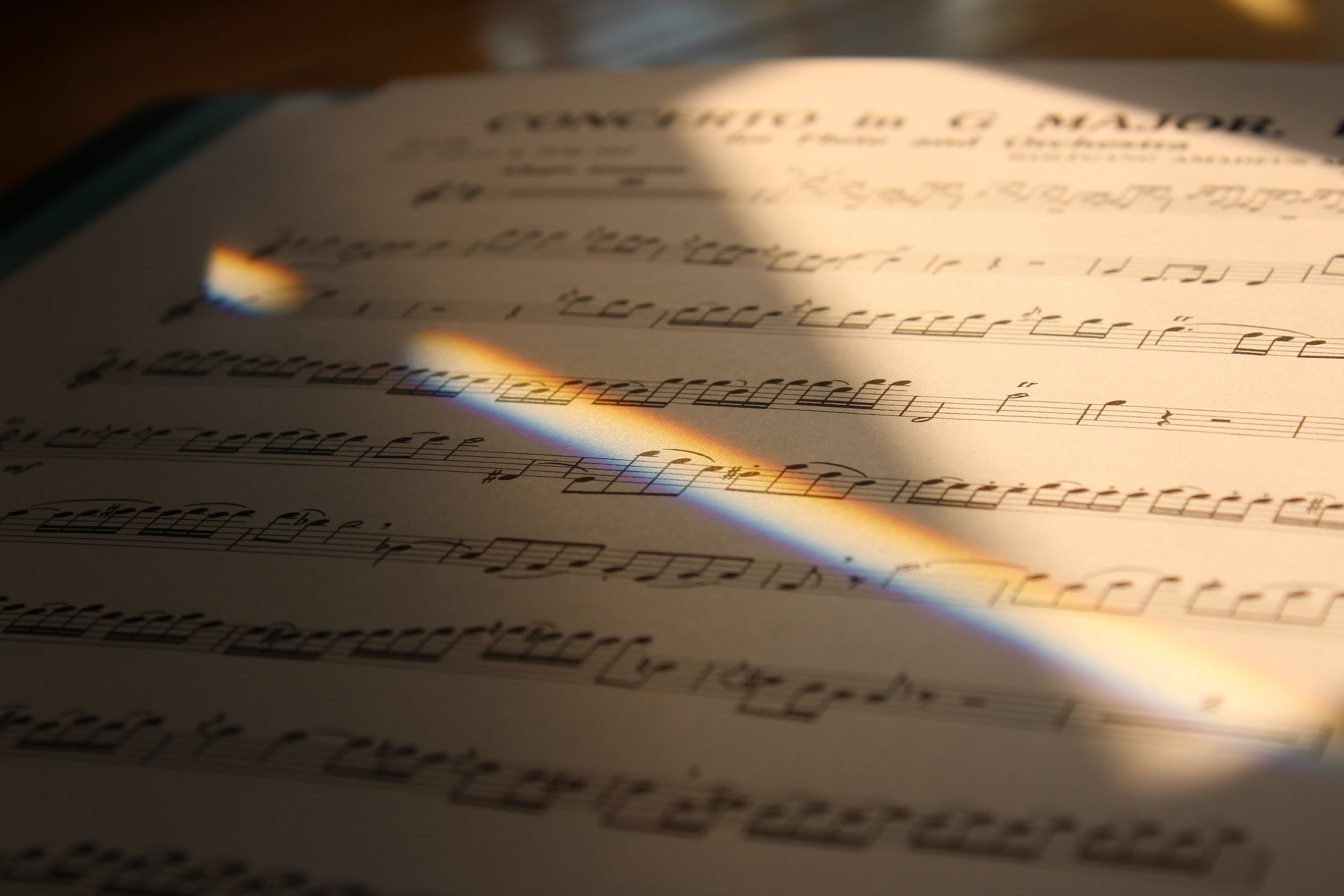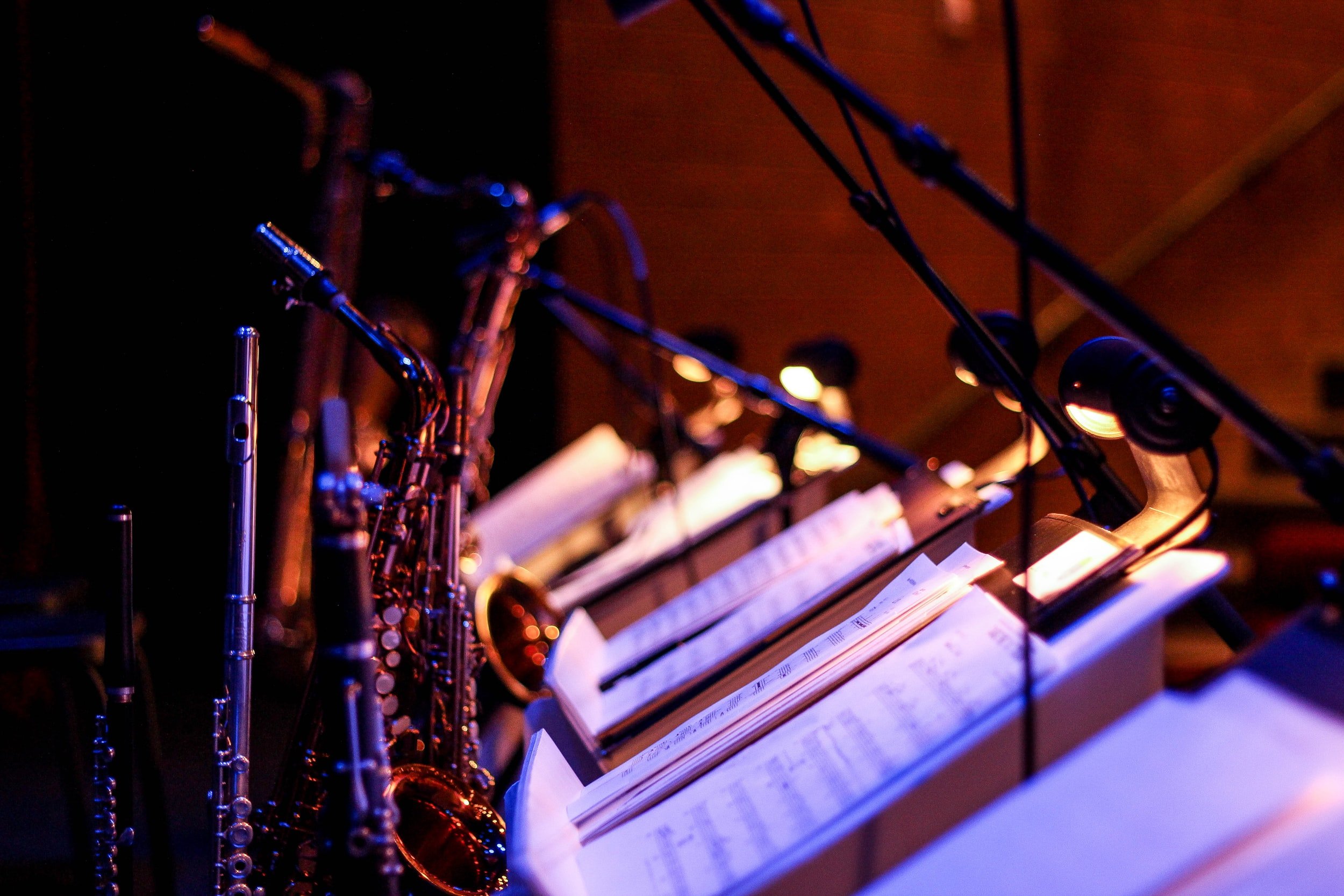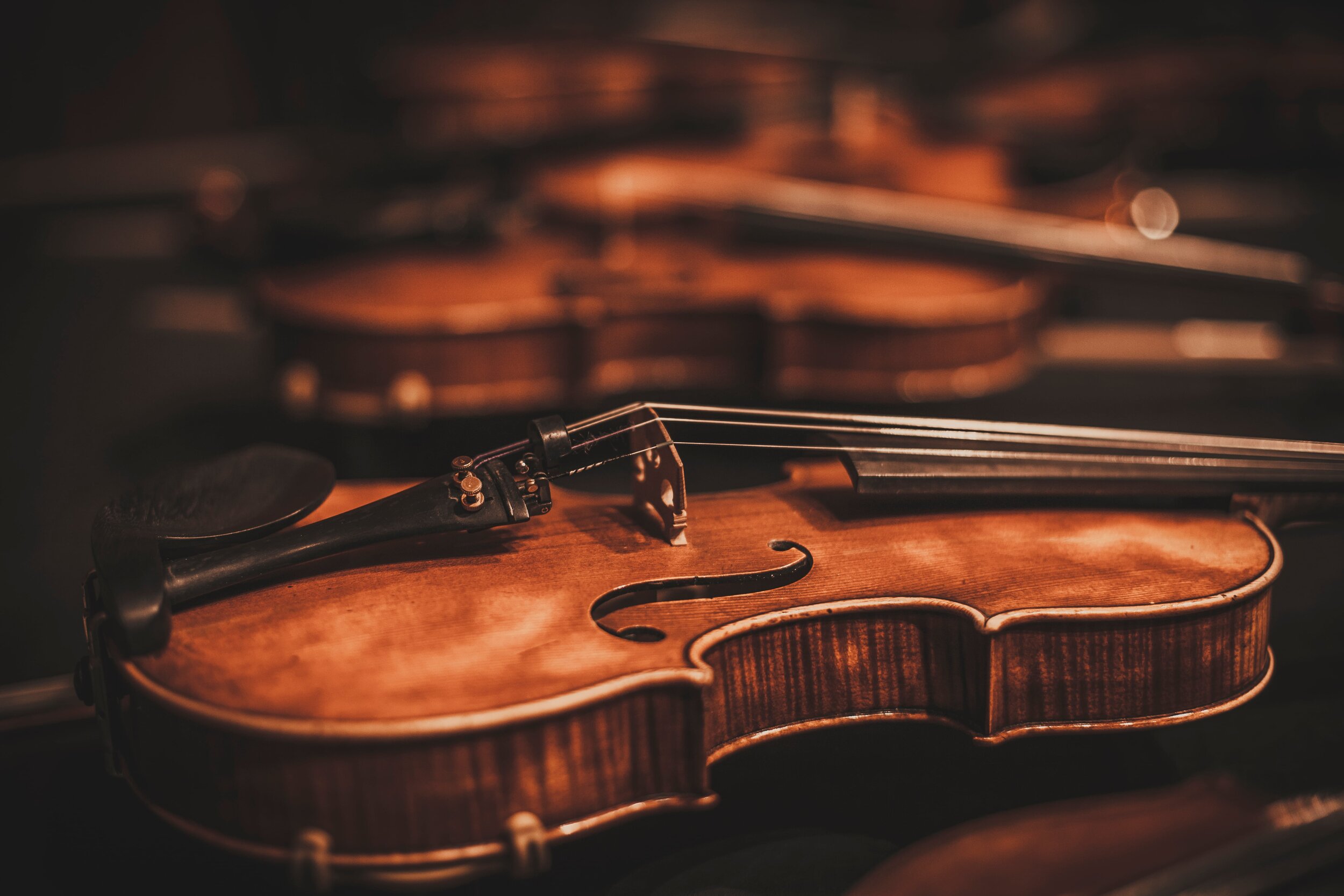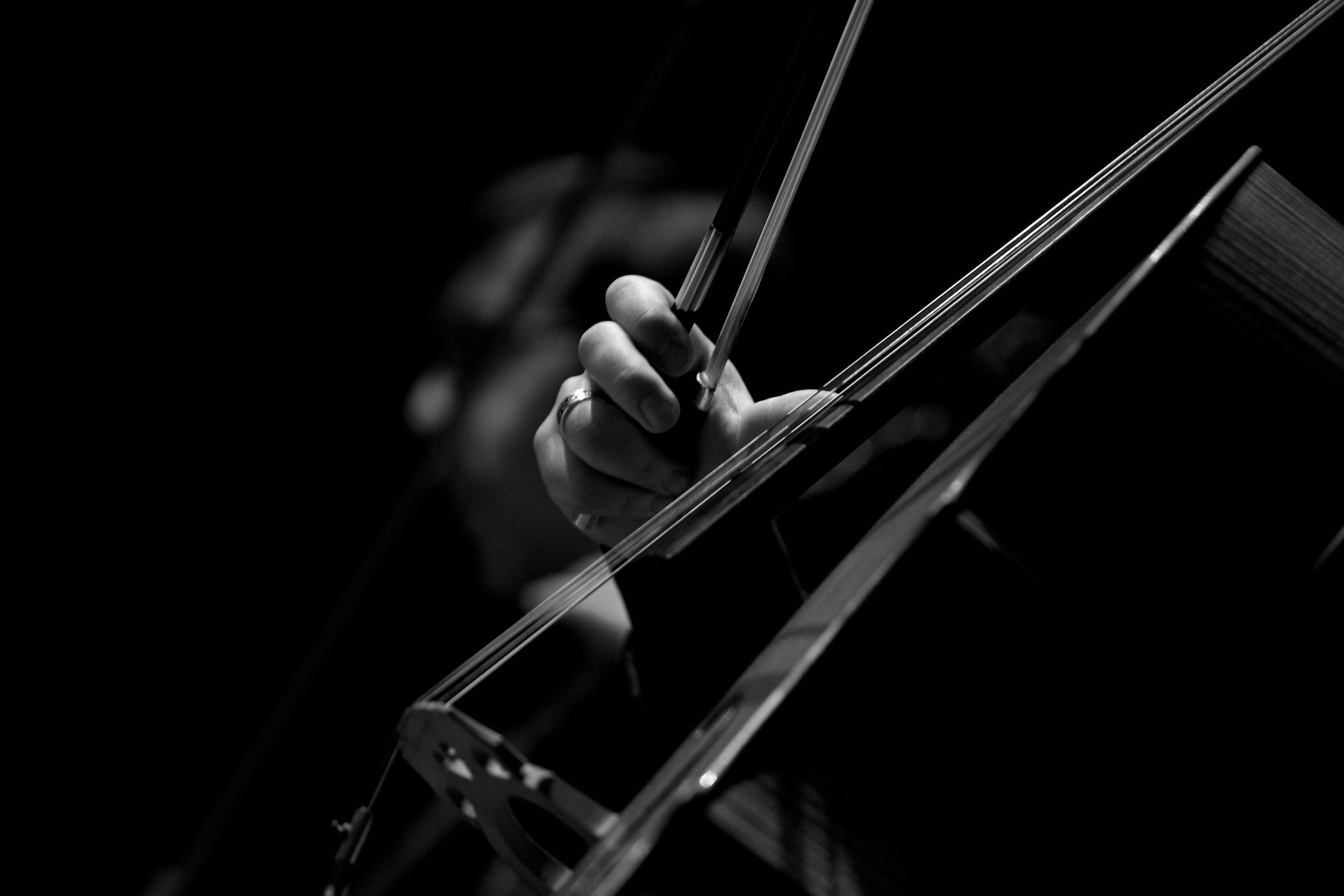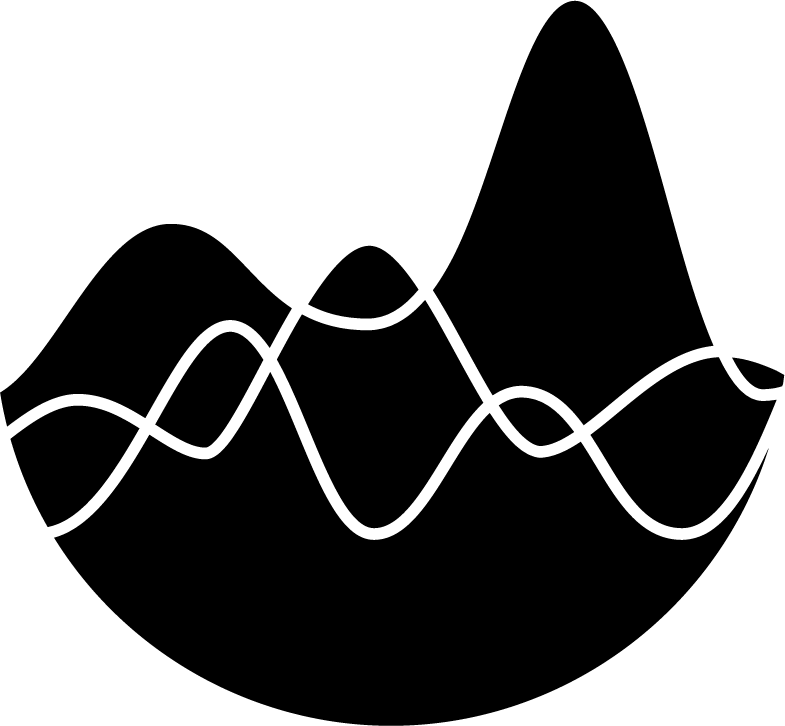Brass | The Horn Family
Brass | The Horn Family
Extreme Orchestration
by Don Freund and David CutlerPublished: February 2024
The horn (rarely referred to as the “French horn” these days) is the most extensively used brass instrument in orchestral writing, whether measured by the number of scores which call for it, the number horns usually included in the instrumentation of a score compared to other brass instruments, or by the relative total duration of time that solo or section horns play in a score. The horn routinely plays higher partials in the harmonic series than other brass. It should be remembered that although the open fundamentals of the horn (B♭1 and F1) are the same as those of the tenor and bass trombone, the basic tessitura of the horn is at least a fifth higher. The relatively small, funnel-shaped mouthpiece and narrow conical bore contribute to the horn’s orientation towards playing higher partials and to its characteristic tone quality. Perhaps more important in establishing the character of the horn is the shape and direction of its bell — broadly flared and facing the rear. Most important of all is the fact that the horn is always played with the hornist’s right hand in the bell, greatly influencing the sound of the instrument, while adjusting intonation as needed. The slightly covered, sweetly unfocused sound of the horn is in a large part due to the fact that the sound is aimed away from the listener and muffled by the hand. Since the right hand is occupied with bell manipulation, the left hand operates the horn’s rotary valves and double-horn trigger. All advanced players use the double horn, two complete sets of horn tubing joined at the mouthpiece and the bell. A trigger routes the air through either the basic F side, which has an unplayable open pedal fundamental of F1, or the B♭ set, whose open fundamental is B♭1, which can be played as a pedal tone.
All modern horn parts are written in F, sounding a perfect fifth lower than written. Bass clef is used for the lowest notes, but horn players prefer to read ledger lines below the treble clef for the middle low range; ledger lines above the bass clef should be avoided. Concert pitch scores may freely alternate between treble and bass clefs, or even use the treble-8vb clef, which is better suited to the horn’s central range than treble or bass, but must never be used in transposed parts.
There is an old convention by which notes written for horn in bass clef sound a p4th higher; this convention can still be found in many 20th-century scores, but (thankfully!) it is considered obsolete. Nevertheless, it is advisable to include a note in the horn part, declaring that all notes, including those in bass clef, sound down a p5, or simply indicating “new notation” over the first use of bass clef. There is a tradition of writing horn parts without key signatures that persists today, but there is no particular reason for this; horn players read key signatures as well as any other instrumentalist.
Another old convention, this one very much alive, concerns the grouping of the four horns in a standard large orchestra. Prior to the general adoption of valved horns (a slow process, taking the entire second half of the 19th century), it was a common strategy to write for two pairs of horns in different keys, allowing the composer two sets of usable partials. The result of pairing horns 1-2 and 3-4 is that horn 1 and 3 generally play higher notes, and 2 and 4 generally play lower notes. Although horn players can be expected to play throughout the entire range of the instrument, many hornists decide early in their careers to become “high horn” or “low horn” specialists. In writing for orchestra, it is advisable to consider that the 2nd horn player will likely be more accomplished in the low range, and the 3rd more confident with higher notes. When horns are frequently doubled a2, 1-3 and 2-4, there is a reasonable argument for placing horns 1 and 3 on one line of score with horns 2 and 4 on the line below. In most other cases, it is preferable to pair 1-2 and 3-4 on two staffs, observing the traditional ensemble relationships and adjacency in stage positioning. Since these staff assignments are variable from score to score, or even within one score, it is imperative that the current deployment be clearly marked in the left margin of every page of the score. (A good example of this can be scene in the Strauss excerpt on the Brass Scoring page)
All modern orchestral horn players use the Horn in F, transposing parts that were written in other keys. Although valved F horns were in general use by the late 19th century, composers such as Wagner, Brahms, and Strauss persisted in notating horn parts in a variety of keys. Horn parts almost always sound lower than written; even C horns sound an octave lower. Horns in B and B♭ usually sound a 9th lower, although this transposition may be specified with the words “alto” (sounds a 2nd lower) or “basso” (sounds a 9th lower). The B Horn in the second movement of Brahms 2nd Symphony sounds a m9th lower, creating the appearance of a very high part; horn players must read this part a tritone down.
The “heart” of the horn range, where it is most agile, flexible and horn-like, is around the octave written from C4 to C5, sounding F3 to F4. The fifth or sixth above this region (up to around written A5, sounding D5) is more brilliant, robust and heroic, and more difficult to play quietly. Above this written A5, notes are generally playable to written C6 (sounding F5) and beyond, but they become less powerful or confident the higher the pitch becomes. The fifth or sixth below the “heart-range” (written D3-B3, sounding G2-E3) can be quite flexible and agile, but the tone is darker, rich and mysterious at p, sinister when played ƒ, and generally less clear and penetrating. As one descends from this region (down to written F♯, sounding B1), the sound becomes darker, muddier, and less responsive — effective for quiet, sustained bass tones or nasty forced sounds. Pedal tones are available from written F2 down to D2, sounding B♭1 down to G1, providing relatively solid single notes within a limited dynamic range of p to mf. Attacks, tonguing, and fast-moving passages all work very well in the “heart” range, becoming more difficult to control securely above this, and progressively muddier below this region.
No other instrument combines the horn’s richly colorful and powerful dynamic range with its ability to blend appropriately and beautifully in almost any situation, perfectly complementing strings, woodwinds, or other brass. While it is difficult to play accurately on the horn, it is just as hard to sound cheap or intrusive. The horn is a handsome melodic instrument, capable of strongly projecting a warm, expressive singing contour with ample color and a broad dynamic range. When an orchestrator needs a strong but sensitive solo voice in the alto or tenor range, the horn is often the first instrument to come to mind. The horn blends so well with the woodwinds that it might claim dual citizenship; its standard placement in score order, above all other brass and right below the woodwinds, is appropriate if one considers how often it is used in conjunction with the woodwinds. It does have impeccable credentials as a brass instrument, however; it is capable of great heroism, force and brassiness of tone, even if its fanfares always sound more benign and rustic than the anxiously militaristic calls of the trumpet. Still another idiomatic use for a horn section is as a provider of harmonic support, supplying rich, unobtrusive chorale-like backdrops over a wide dynamic spectrum. The sound of the horn is particularly well suited to playing a2 or even a4: four horns playing in unison, forte, is a powerful effect.
Since the core region of the horn’s playing range uses higher partials than other brass, and since higher partials are closer together, coordination of the ear and lips is more critical on the horn. In other words, even the best horn players occasionally miss notes. Parts with many skips or those that require delicate entrances on high notes can be risky. Rapid passagework is not idiomatic to the horn, and fast music, even when played perfectly, lacks the brilliance and clarity it would have on the trumpet. The middle-low and low registers of the horn are somewhat slow to respond, so passages requiring agility or adroitness of tonguing are not idiomatic to this area.
The horn is arguably the most fatiguing to play of all brass instruments. 15-30 seconds of rest will allow the blood circulate to lips that may begin to lose control due to fatigue. Most orchestras employ an assistant principal horn, who plays some of the less exposed music of the first horn part, allowing the principal horn to re-enter with fresh lips.
Trills work well throughout the range of the horn. Half-step trills are generally valve trills, as are most whole-step trills in the lower range. Whole-step trills from written G4 up may be executed as lip trills.
Glissando: Harmonic glissandos are effective on the horn, and can be executed rather slowly as an arpeggio, or quickly as a “rip.”
Tone-Bending: Curiously, as the right hand is placed further into the bell, the effect is one of lengthening the sound-wave, therefore lowering the pitch. This can be used to create pitch-bending.
Half-Stopping or Echo Horn: When the hand is far enough to lower the pitch a m2nd, the sound is greatly muted and distant sounding, an effect called half-stopping or echo horn, which requires the player to finger the notes a half-step higher to get the notated pitch.
Full-Stopping or Stopped: Placing the hand all the way in the bell suddenly forces the pitch a m2nd above the fingered note; this is called full-stopping or simply stopped. Players must finger a half-step lower when the horn is stopped. In all these cases the pitch is notated normally, a p5th above the actual sound; the player will make the needed fingering adjustments.
Transition: While it is possible to shift gradually from open to half-stopped, the transition to full-stopped is always a sudden flip at the breakpoint where the sound wave is shortened. Stopped horn is always indicated with a “+” on every stopped note (or a dotted line extension after the first “+”) and cancelled with an “O.” It is recommended that the word “stopped” also be written above the first “+” symbol.
Stopped horn is frequently used as a substitute for muting, since it can be done and undone immediately and requires no additional equipment. Note that the sound of loud stopped horn is significantly different from muted horn, very nasal and sinister, requiring a very hard blow to project to the audience; soft stopped horn has less of the nasal quality. Below written C4, sounding F3, stopped horn tones are fuzzy and difficult to produce, losing most of the effective character. A “stopping mute” can be used to imitate the stopped sound; this mute works much better than hand stopping on low notes but only approximates the sound of hand stopping. The following excerpt is particularly effective.
The effectiveness of this passage is due not only to the striking contrast of open and stopped horn, but also the use of extremely low clarinets to complete the biting sonority. One word of caution: Stopped horn is a wonderful special effect, but novice orchestrators tend to overuse this technique.
Mutes other than the straight mute for the horn are so rare that the adjective “straight” has been virtually dropped in identifying the horn mute. Muted horn is a distinctive sound, reedier than the open horn, buzzy and intense when played loudly.
The Natural Horn. There is an interest in the natural, valveless horn that goes far beyond its use in period instrument ensembles. Perhaps this is because so much important music was written with its characteristics and limitations in mind, or possibly because of its cosmic ties to the natural harmonic series. It is worth noting that neither Beethoven nor contemporary composers have been limited to the harmonic series, using hand-stopping to alter the pitch.
This passage for 3 horns in E♭ becomes especially interesting when played on natural horns. Only the 2nd horn has pitches that are well outside the harmonic series; the last note, written A♭3, sounding C♭3, is particularly pungent harmonically and timbrally, using the low range and a sforzando attack.
Hornist-composer Robert Patterson’s recent Quartet for Natural Horn and Strings exploits the timbres created by mixing pitches outside the harmonic series with natural harmonic tones:
The composer explains: “Most of the pitches in this example are played open. Written B♭4, F♯;5, and A5 — corresponding to 7th, 11th, and 13th partials, respectively--sound quite flat. The player must take the hand completely out of the bell to play these notes in tune. By contrast, written D♯5, B4, and A4 are played with the hand closed. The descending pattern in bar 8, for example, requires a continuous movement of the right hand from outside the bell to covering it, with a corresponding shift in timbre.”
Wagner Tubas are called for in some of the music of Wagner and Bruckner, and in Stravinsky’s Rite of Spring. They are something of a cross between a horn and a euphonium, but are generally played by horn players on instruments owned or rented by the orchestra or opera company.
Alto Horns, Mellophones and Mellophoniums are closer to the trumpet (or more specifically, the cornet) than the horn; their function is to replace the horn in marching bands, and their sounding range is similar to the horn without the horn’s bottom octave. They are fingered with the right hand, and the bell faces forward. The mellophonium is the most horn-like of these, sporting a larger bell.
Horn Orchestral Examples. Here are examples from orchestral literature that demonstrate characteristics of the horn.
Horn Orchestral Examples.
Here are examples from orchestral literature that demonstrate characteristics of the horn.
HORN EXCERPTS.
Tchaikovsky: Symphony No. 5, 2nd Movement, m 8-28. This is the quintessential cantabile horn solo. Note that, in spite of its expansively lyrical shape, its written range lies entirely within the treble staff, sounding a p5 lower. The variations of color, dynamics, and articulation that Tchaikovsky crafts into this solo are given an ideal register for assured projection.
Strauss’s famous opening horn solo presents the same music twice, the second time louder and faster. The wide range and mixed articulations give it a robust playfulness. Note that the “old notation” is used for bass clef: notes sound a p4 higher than written.
This duo from Haydn’s “Horn Signal” Symphony demonstrates the 18th century roles of high and low horn writing, with a flowing melody in the first, and a pizzicato-like accompaniment in the second. Modern horn players will play both parts on Horn in F, transposing it down a m3; it sounds a m7 lower than written. “Old notation” for bass clef is used – the low written C1 sounds a M2 higher.
This is a brilliant example of fast virtuoso writing for the horn section. Notice how the 3rd horn is usually written above the 2nd horn. The close voicing allows the horn sound to coalesce into a powerfully rich element.
This is an extraordinary example of using the whole horn section a4 throughout the range of the instrument, taking the 1st and 3rd horns very low at the beginning and employing the 2nd horn as a “high horn” at the end. “Old notation” for bass clef is used, so it is not quite as low as it may appear.
Eight(!) horns eventually play this open arpeggio in close canon, creating a miraculous horn web of an E♭ major triad









